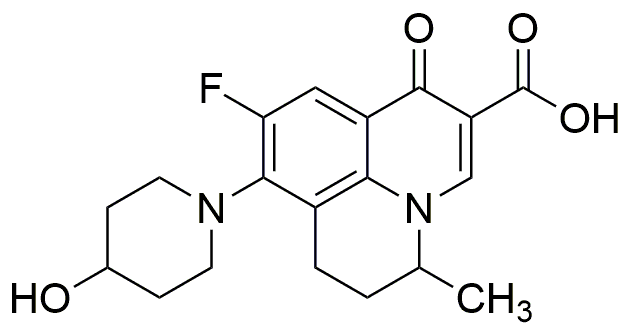Nadifloxacin is widely utilized in research focused on:
- Topical Antibiotics: Commonly used in dermatology for treating bacterial skin infections, providing effective relief with minimal systemic absorption.
- Veterinary Medicine: Employed in the treatment of skin infections in animals, ensuring the health of pets and livestock while minimizing the risk of antibiotic resistance.
- Pharmaceutical Development: Serves as a key compound in the formulation of new antibiotics, contributing to the fight against resistant bacterial strains.
- Research on Antimicrobial Resistance: Utilized in studies aimed at understanding and combating the mechanisms of resistance in bacteria, helping to inform future treatment strategies.
- Cosmetic Applications: Incorporated in skincare products for its antibacterial properties, aiding in the prevention of acne and promoting clearer skin.
General Information
Properties
Safety and Regulations
Applications
Nadifloxacin is widely utilized in research focused on:
- Topical Antibiotics: Commonly used in dermatology for treating bacterial skin infections, providing effective relief with minimal systemic absorption.
- Veterinary Medicine: Employed in the treatment of skin infections in animals, ensuring the health of pets and livestock while minimizing the risk of antibiotic resistance.
- Pharmaceutical Development: Serves as a key compound in the formulation of new antibiotics, contributing to the fight against resistant bacterial strains.
- Research on Antimicrobial Resistance: Utilized in studies aimed at understanding and combating the mechanisms of resistance in bacteria, helping to inform future treatment strategies.
- Cosmetic Applications: Incorporated in skincare products for its antibacterial properties, aiding in the prevention of acne and promoting clearer skin.
Documents
Safety Data Sheets (SDS)
The SDS provides comprehensive safety information on handling, storage, and disposal of the product.
Product Specification (PS)
The PS provides a comprehensive breakdown of the product’s properties, including chemical composition, physical state, purity, and storage requirements. It also details acceptable quality ranges and the product's intended applications.
Certificates of Analysis (COA)
Search for Certificates of Analysis (COA) by entering the products Lot Number. Lot and Batch Numbers can be found on a product’s label following the words ‘Lot’ or ‘Batch’.
*Catalog Number
*Lot Number
Certificates Of Origin (COO)
This COO confirms the country where the product was manufactured, and also details the materials and components used in it and whether it is derived from natural, synthetic, or other specific sources. This certificate may be required for customs, trade, and regulatory compliance.
*Catalog Number
*Lot Number
Safety Data Sheets (SDS)
The SDS provides comprehensive safety information on handling, storage, and disposal of the product.
DownloadProduct Specification (PS)
The PS provides a comprehensive breakdown of the product’s properties, including chemical composition, physical state, purity, and storage requirements. It also details acceptable quality ranges and the product's intended applications.
DownloadCertificates of Analysis (COA)
Search for Certificates of Analysis (COA) by entering the products Lot Number. Lot and Batch Numbers can be found on a product’s label following the words ‘Lot’ or ‘Batch’.
*Catalog Number
*Lot Number
Certificates Of Origin (COO)
This COO confirms the country where the product was manufactured, and also details the materials and components used in it and whether it is derived from natural, synthetic, or other specific sources. This certificate may be required for customs, trade, and regulatory compliance.


